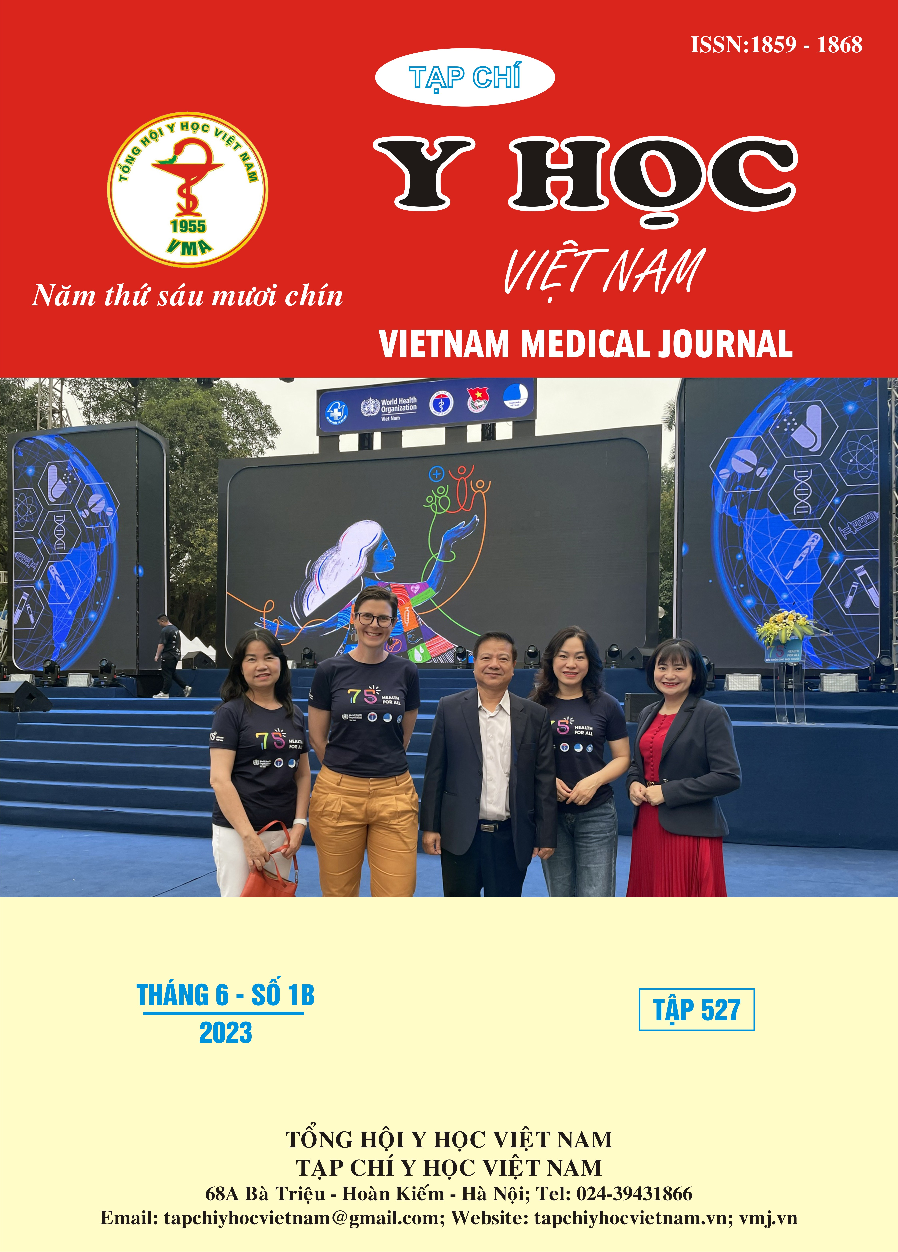EFFECT OF METABOLIC SYNDROME ON LEFT VENTRICULAR FUNCTION IN PATIENTS WITH TYPE 2 DIABETES
Main Article Content
Abstract
Objectives: To determine the effect of metabolic syndrome (MS) on residual function of left ventricular in patients with type 2 diabetes mellitus. Subjects and research methods: A cross-sectional descriptive study was conducted with 183 type 2 diabetes patients with MS and 75 type 2 diabetes patients without MS at Thai Binh Medical University Hospital from February to August 2022. All of patients were evaluted left ventricular function by echocardiography. Research results: The average age of patients was 69.3 ± 7.8 years (Female/Male with MS = 2/1), the highest prevalence (74%) occurs in the 60 to 69 years age group with MS. The isovolemic contraction time (IVCT), isovolemic relaxation time (IVRT), Tei index in the group with MS were significantly greater than the group without MS (94.8 ± 38 versus 77.5 ± 40.2 (ms), p < 0.05; 116.5 ± 32.1 versus 94.4 ± 39.9 (ms), p < 0.001; 0.81 ± 0.35 versus 0.64 ± 0.20, p < 0.05, respectively). The E wave velocity and the E/A ratio in the group with MS were smaller than the group without MS (48.8 ± 19.1 versus 54.4 ± 18.0, p < 0,05 and 0.66 ± 0.42 versus 0.79 ± 0.32; p < 0.05, respectively). The A wave velocity in the group with MS was larger than the group without MS (77.4 ± 21.5 versus 70.8 ± 18.3, p < 0,05, respectively). There was no differences in contraction fraction (%D), ejection fraction (EF%), stroke volume (SV) and cardiac output (CO) between two groups. Conclusion: Factors of metabolic syndrome reduce diastolic function and total left ventricular function but do not affect left ventricular systolic function in patients with type 2 diabetes
Article Details
Keywords
Type 2 diabetes mellitus (DM), metabolic syndrome (MS), left ventricular function
References
2. Burchfiel CM, Skelton TN et al (2005), “Metabolic Syndrome and Echocardiographic Left Ventricular Mass in Blacks”. Circulation; 112:819-827.
3. Andrew Mente 1, Salim Yusuf, Shofiqul Islam, Matthew J McQueen, Supachai Tanomsup, Churchill L Onen, Sumathy Rangarajan, Hertzel C Gerstein, Sonia S Anand; INTERHEART Investigators, Metabolic syndrome and risk of acute myocardial infarction a case-control study of 26,903 subjects from 52 countries, J Am Coll Cardiol. 2010 May 25;55 (21):2390-8. doi: 10.1016/j.jacc.2009.12.053.
4. American Diabetes Association, (2010), Standards of Medical Care in Diabetes-2010, Diabetes Care. 2010 Mar; 33(3) (Suppl. 1):S11–S61
5. Alberti KG., Eckel RH., Grundy SM. et al, Harmonizing the metabolic syndrome: a joint interim statement of the International Diabetes Federation Task Force on Epidemiology and Prevention; National Heart, Lung, and Blood Institute; American Heart Association; World Heart Federation; International Atherosclerosis Society; and International Association for the Study of Obesity. Circulation, 05 Oct 2009, 120(16):1640-1645.
6. Ilercil A., Devereux R.B., Roman M. (2001), “Relationship of impaired glucose tolerance to left Venticular structure and function”, The Strong Heart Study, Am Heart J, (141), pp. 992-998.
7. Poirier, Bogaty, Garneau, Marois, Dumesnil (2001), "Diastolic dysfunctions in normotentive men with well – control type 2 Diabetes", Diabetes cares, 24, pp. 5-10.
8. Alxander Tenenbaum et al (2003), "Increased prevalence of left ventricular hypertrophy in hypertensive women with type 2 diabetes mellitus, Cardiovascular Diabetology 2", Medicine and Biology, 14(1), pp. 36-49.
9. Bajrakatari G., Koltai M.S., Ademaj., Rexhepaj., Qirko S., Ndrepepa G. (2006), “Relationship between insulin resitance and left ventricular diastolic dysfunctions in patients with Impair Glucose and type 2 diabetes”, Internal Journal of Cardiology, pp. 206-20.
10. Grand AM, Maresca AM, Giudici E et al (2006), “Metabolic syndrome and morphofunctional characteristics of the left ventricle in clinically hypertensive nondiabetic subjects Am J Hypertens;19(2):199-205.


